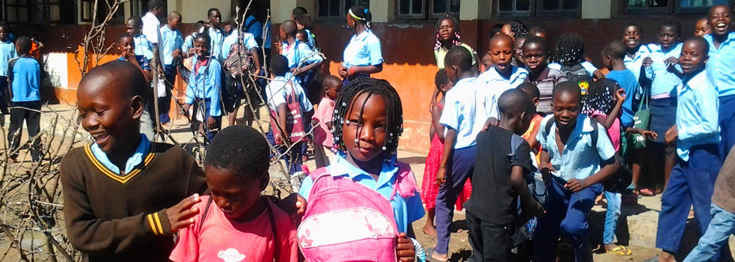
As schoolchildren sit quietly listening to their teacher or even gazing out the window, the furthest thing from their minds is the safety of their school building. They may be unaware that their school is located in a flood zone or that last year’s cyclone has weakened the roof, which may be in danger of collapsing, but these are very real issues affecting schools in Mozambique due to the country’s extreme exposure to natural disasters.
The Mozambique Ministry of Education is taking great strides to ensure schools remain resilient to the impacts of these disasters and provide safe and nurturing learning environments for children. A joint initiative has been developed with the aim of reducing the risk of damage to a school’s infrastructure, protecting the children inside and ensuring education facilities remain functional.
Disasters have caused a disruption of education in Mozambique for quite some time. In 2012, Cyclone Funso and Tropical Storm Dando damaged 1,000 classrooms along the eastern coastline and in 2013, heavy flooding affected 250 classrooms in the Limpopo Basin. According to UN-Habitat, 60% of schools in the country are located in areas that can be exposed to one or more natural disasters and 200 to 1,000 classrooms are affected each year by cyclones and floods. The high impact is often due to issues such as poor structural design, use of subpar construction materials and ad hoc building practices.
Since July 2012, the World Bank’s Africa Disaster Risk Management (DRM) Group, with financial support from the Global Facility for Disaster Reduction and Recovery (GFDRR), along with UN-Habitat and the Faculty of Architecture and Physical Planning (UEM-FAPF) at Eduardo Mondlane University, Maputo, have actively worked to produce effective strategies to help develop school safety guidelines for classroom facilities across the country. Additionally, the Government of Mozambique is benefitting from a stronger perception of the DRM procedures needed to revamp the schools’ infrastructure network.
“The implementation of this project constitutes an enormous contribution to materialize government policy of school expansion, which is to enlarge more and more the national school network by providing conventional and safe classrooms to all the children of school age and at the same time, rationalizing permanently the investments made in this area” Luis noted.
Working together with relevant Ministries, the European Union (EU) and the Education Sector Support Fund (ESSF), a multilateral donor support channel, this joint initiative implements a phased approach by first undertaking risk assessments of schools and creating a catalog of hazard-resistant construction types and architectural models with adaptive measures for both traditional and conventional materials. For example, by assessing 637 classrooms in seven provinces of the country, officials were able to draw on their observations and realized that without proper planning, the technical execution required for building safer schools was lacking. Additionally, an outdated national building code and limited access to updated risk information added to the ongoing struggle. The assessments led to a cohesive strategic plan for building safer schools.
“The outcomes of the phased approach are certainly visible and the consensus among government partners regarding the importance of building resilient schools is the most remarkable,” said Sophie Naudeau, senior education specialist in the Bank’s Mozambique country office. “Add to this the sound risk analysis tools as well as guidelines on how to build similar schools across regions of Mozambique and one can really get a sense of the accomplishments to date. Now the challenge will lie in ensuring efficient implementation across provinces.
The next phases of the project will focus on school construction using dedicated national staff to strengthen both the policy and regulatory environment. The initiative will also aim to enhance the understanding of the types of disasters and climate issues affecting schools throughout the country. Additionally, the phased approach is linked to the GFDRR Safer Schools program. This program, which operates at both global and country levels, focuses on preventing disaster risks from affecting schools and also promotes an open source platform to share school safety guidelines.
Moving forward, the Bank, along with other donors, will continue to contribute to the ESSF with the goal to finance 800 increasingly newly resilient primary education classrooms and 150 rural secondary classrooms each year. Forty thousand classrooms are currently located in Mozambique, with the scheduled construction of almost 30,000 more.
“Over the last two years, a greater understanding of possible risks associated with hydro-meteorological events, such as floods, has led to a consensus on how to improve the state of schools in Mozambique to make them more resilient to natural disasters," said Mark Lundell, the Bank's country director in Mozambique. “By intertwining the DRM and education practices, we hope to continue addressing this important development issue. Our intention is to create a sustainable learning environment for future generations.”
